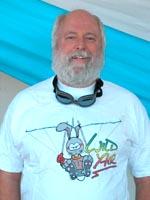12/13/2003
 The prestigious John Moody Award will be presented to Jack McCornack at
USUA's Annual Meeting And Award Ceremony, this year held in conjunction with
the Illinois Ultralight Advisory Council meetings on February 28, 2004 in
Springfield, Illinois. He is the twelfth recipient of the award since its
inception in 1991.
The prestigious John Moody Award will be presented to Jack McCornack at
USUA's Annual Meeting And Award Ceremony, this year held in conjunction with
the Illinois Ultralight Advisory Council meetings on February 28, 2004 in
Springfield, Illinois. He is the twelfth recipient of the award since its
inception in 1991.
The John Moody Award was named in honor of "The Father of Ultralights," John
Moody. In 1976, Moody was the first to provide the public with a complete
ultralight kit that included both engine and airframe. Paying homage to the
history and development of ultralighting, the Moody Award is ultralight
aviation's highest award. The Award is presented annually to an individual,
a group of individuals, or an organization for their efforts over a period
of years. It gives them credit for their efforts and their significant
contributions or advancements in the United States ultralight aviation
community.
The previous Moody Award Winners are Wayne Ison, Tom Peghiny, Homer Kolb,
Dan Johnson, Ultralight Flying! Magazine, Vincent Vitollo, Boris Popov, John
Ballantyne, Dr. Henry O. Malone, Charles Slusarczyk, and Dennis Pagen.
"USUA continues its tradition to recognize and honor those individuals who
have helped to make the sport of ultralighting what it is today. Their
knowledge, persistence, and insight has been and will continue to be very
important," remarked Dale Hooper, USUA Executive Vice President.
Jack McCornack has earned the Moody Award for his more than 25 years as an
educator, designer, writer and pilot. Jack has trained pilots in
preparation for national and international competition. In addition, he has
participated in the World Air Games and the World Microlight Competition.
In 1978, Pterodactyl Ltd. - founded by Jack was the only ultralight
manufacturer with a formal flight training system. The training manual
entered the public domain when it was published in Glider Rider; now
Ultralight Flying! Magazine. Other manufacturers were allowed to copy or
revise the Pterodactyl Ptraining Syllabus and they did not have to pay any
royalties.
As a designer, the 1970's saw Jack improving on the engines used to power
ultralights. Many manufacturers used go-kart or small displacement
industrial engines. These engines were very unreliable. By going to larger
engines detuned for dependability, he achieved the same amount of power.
However, the dramatic result was a very dependable engine. In 1979, Jack
proved how this engine could make cross-country flight possible. Along with
four other pilots, using engines designed by Jack, the group flew
coast-to-coast across America.
The Cuyuna engine appeared on the scene in the early 1980's. Jack developed
a larger twin cylinder engine that was similar to a snowmobile power plant.
However, it was more reliable and it weighed less. The first year it was
produced, it was called the Pterodactyl 430D and 430R. Then Jack convinced
the company that did the tooling to use their own name. Following the lead
of the Cuyuna design, Rotax and others followed suit.
From engine power to manpower, foot-launched ultralights were eventually
replaced by craft that had full suspension landing gear. Due to Jack's
efforts, planes such as the Pterodactyl Pfledge, Cuyuna 430R and Pterodactyl
Ascender fulfilled FAA's foot launch requirement. As a result, the
direction was set towards Part 103 and it wasn't long before an ultralight
was no longer associated with launch technique.
In addition to writing the earlier training syllabus, Jack writes a column
that appears monthly in Ultralight Flying! Magazine. Through his writing, he
continues to inform, educate, and entertain people interested in the sport
of ultralighting. With a comprehensive history and background as this, USUA
is proud to honor Jack McCornack with the 2003 Moody Award.
 The prestigious John Moody Award will be presented to Jack McCornack at
USUA's Annual Meeting And Award Ceremony, this year held in conjunction with
the Illinois Ultralight Advisory Council meetings on February 28, 2004 in
Springfield, Illinois. He is the twelfth recipient of the award since its
inception in 1991.
The prestigious John Moody Award will be presented to Jack McCornack at
USUA's Annual Meeting And Award Ceremony, this year held in conjunction with
the Illinois Ultralight Advisory Council meetings on February 28, 2004 in
Springfield, Illinois. He is the twelfth recipient of the award since its
inception in 1991.